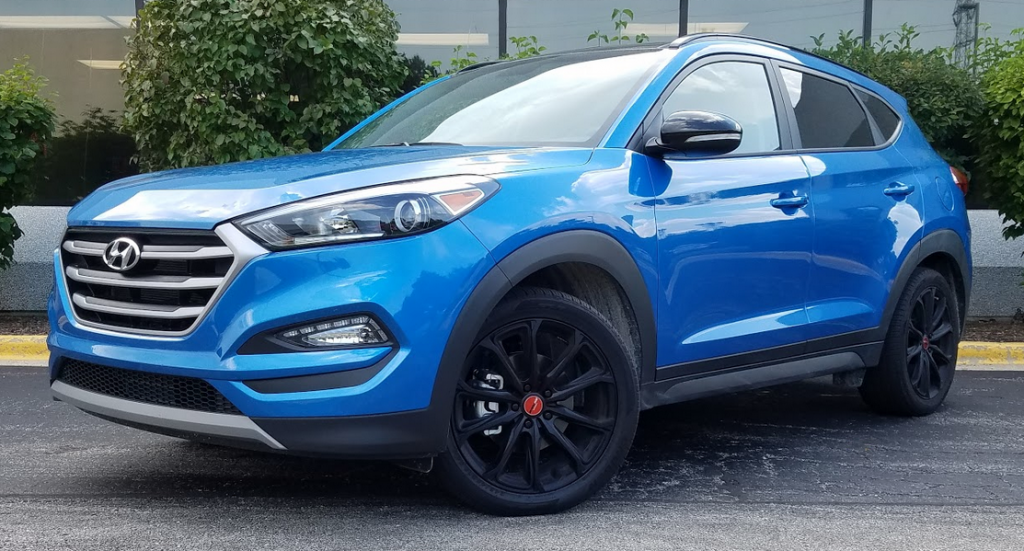
 2017 Hyundai Tucson Night AWD
2017 Hyundai Tucson Night AWD
Class: Compact Crossover SUV
Miles driven: 344
Fuel used: 14.0 gallons
Real-world fuel economy: 24.6 mpg
| CG Report Card | |
|---|---|
| Room and Comfort | B+ |
| Power and Performance | B |
| Fit and Finish | B+ |
| Fuel Economy | B |
| Value | B+ |
| Report-card grades are derived from a consensus of test-driver evaluations. All grades are versus other vehicles in the same class. Value grade is for specific trim level evaluated, and may not reflect Consumer Guide's impressions of the entire model lineup. | |
| Big & Tall Comfort | |
| Big Guy | B |
| Tall Guy | B+ |
| Big & Tall comfort ratings are for front seats only. "Big" rating based on male tester weighing approximately 350 pounds, "Tall" rating based on 6'6"-tall male tester. | |
Driving mix: 70% city, 30% highway
EPA-estimated fuel economy: 24/28/25 (city, highway, combined)
Base price: $29,200 (not including $895 destination charge)
Options on test vehicle: Floor mats ($125)
Price as tested: $30,220
Quick Hits
The great: Clear control layout, good balance of passenger and cargo room in a sensibly sized package
The good: Balanced, composed handling
The not so good: Non-linear behavior of automated-manual transmission
More Tucson price and availability information
John Biel
Night has fallen on the Hyundai Tucson—well, the Night has fallen at least.
Hyundai’s compact crossover sport-utility vehicle wedges a new trim level between the Sport and top-line Limited for 2017. The Night is a style-driven model in line with a current fad for black trim items, but it does boast one premium feature—a panoramic sunroof—that’s optional on most other Tucsons, even the Limited. As such, it shares the strengths and weaknesses found throughout the product line.
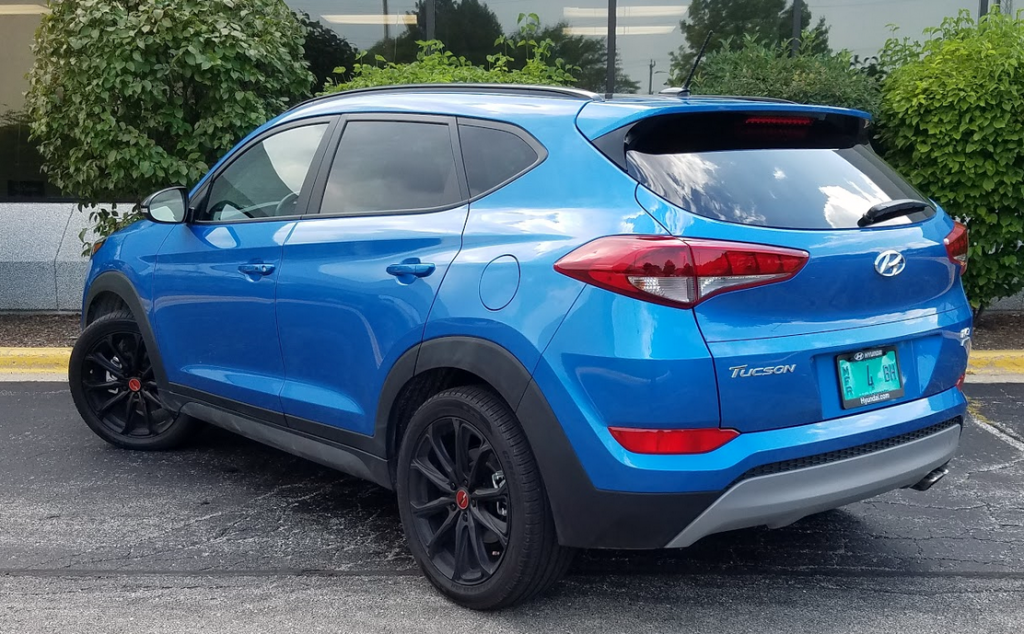
The Night pretty much comes as-is at a base price of $27,800 with front-wheel drive or $29,200 with all-wheel drive. There are no option groups offered for it, just stand-alone accessories. With delivery and a set of extra-cost carpeted floor mats tacked on, the Caribbean Blue AWD Night tested by Consumer Guide® came to $30,220.
The Night lights up with a set of black-finish 19-inch RAYS alloy wheels with 245/45R19 tires, gloss-black exterior-mirror caps, and matte-black body sills in place of the brighter metallic-painted sills found on other models. Inside there are bright-metal pedal faces, a steering wheel wrapped in perforated leather, and front and rear LED map lights. Overhead is the moonroof with a power-retracting shade and tilt-and-slide forward section.
Test Drive: 2017 Jeep Compass Latitude
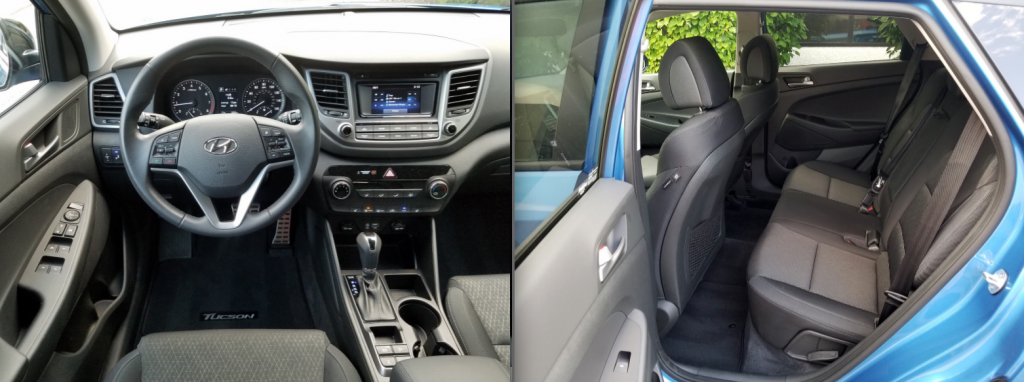
Hyundai did a redesign on the Tucson for 2016, with revamped sheetmetal, a redone control layout, and a new engine/transmission pairing found in all but the low-line SE and SE Plus. Not surprisingly, the ’17 Tucson is little changed. Android Auto and Apple CarPlay compatibility are now available for the Limited; cloth upholstery is now stain resistant; and Eco, Sport, and Night models add rear air-conditioning vents.
Other standard items on the Night test car were power heated mirrors with turn-signal indicators, fog lamps, a rear spoiler, a hands-free power liftgate, roof side rails, and chrome-tipped dual exhaust outlets. Interior conveniences included proximity-key entry and push-button starting, a tilt and telescoping steering column, air conditioning, heated front seats, 8-way power-adjustable driver’s seat with power lumbar support, an easily programmed AM/FM/CD/MP3 stereo displayed on a 5-inch touchscreen, satellite radio, and Bluetooth connectivity. Driver aids and safety technologies encompassed lane-change assist, blind-spot detection and rear cross-traffic alert, and a rearview camera.
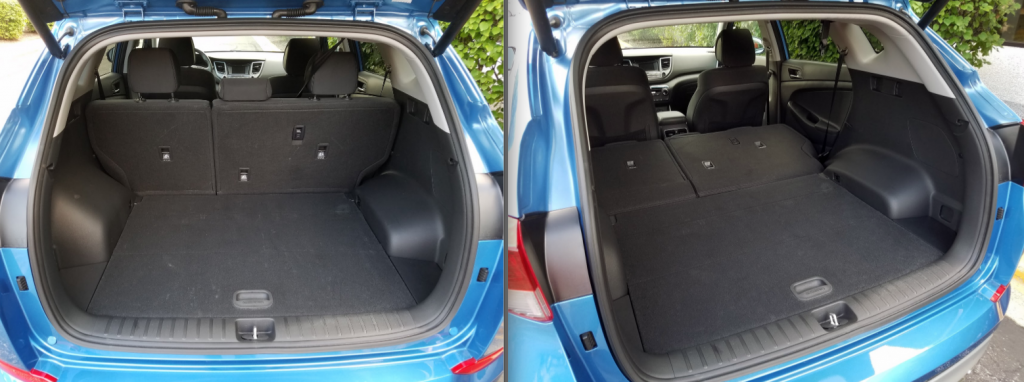
As in most Tucsons, Night power comes from a turbocharged 1.6-liter 4-cylinder engine of 175 horsepower at 5500 rpm and 195 lb-ft of torque between 1500 and 4500 rpm. The engine is paired with a 7-speed dual-clutch automatic with a console button that allows drivers to select “Eco” or “Sport” driving modes as alternatives to the basic calibrations. The AWD system is designed to automatically transfer engine torque to the rear wheels and apply braking force to the inside rear wheel in cornering. It also includes a driver-selectable differential lock that creates an even split of available torque to improve off-road traction.
Driving behavior in the Night was about the same as in the 2016 Limiteds that CG sampled. After fairly tame starts, the turbo engine delivers decent midrange punch. The transmission shifts promptly, but some of our editors found its behavior to be clunky and non-linear at low speeds and when pulling away from a stop. One benefit of this powerteam is supposed to be improved fuel mileage. EPA ratings for the AWD model are 24 mpg in the city, 28 mpg on the highway, and 25 combined. This reviewer’s stint of 142 miles—with 65 percent city-style driving—came close to the feds’ combined estimate at 24.9 mpg.
Test Drive: 2017 Mazda CX-5 Grand Touring
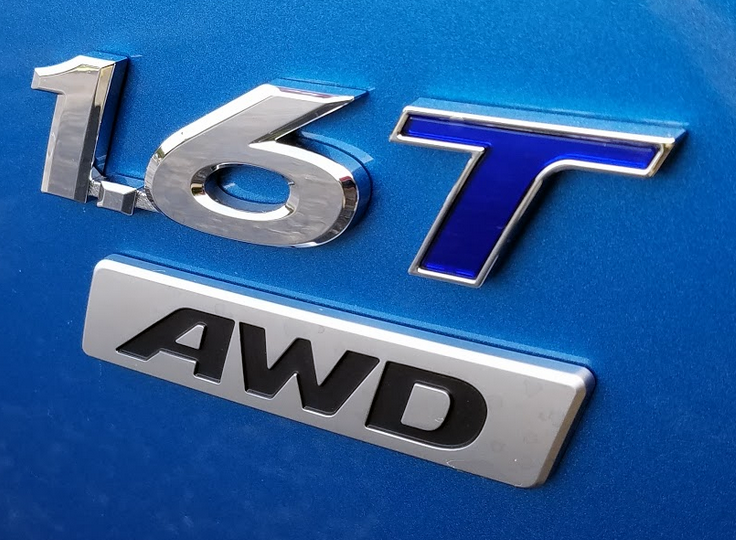
The Tucson’s easy-driving nature is also preserved. Tidy dimensions and responsive steering make it a pleasant handler. Even with a 105.1-inch wheelbase, it will hop a little bit over road imperfections, but damping is sufficient to keep from jolting occupants over all but the worst pavement, even with the 19-inch tires and wheels.
Slight padding is in evidence in places where passengers are most likely to rest a hand or elbow but lower portions of the doors and the console have their share of stiff plastic. Front passengers enjoy good leg- and headroom, and plenty of long-drive support from the cloth-upholstered seats. Three kids or perhaps as many narrow-hipped adults could fit in the rear in a pinch. Folks in the 2 outboard positions will find acceptable legroom (unless a daddy longlegs in front tracks all the way back), and headroom is ample. Driver sightlines are pretty good except to the far rear corners. Entry and exit is easy through all 4 doors.
The center console plays host to twin cup holders, a large cubby under a padded lid, and a small open bin at the front with USB and power ports. Rear-seat passengers are provided with net pouches on the back of both front seats, and a pull-down center armrest with dual cup holders. Pockets in all 4 doors have bottle holders.
The flat-floored cargo area loads at bumper height. Rear space is a bit limited until the 60/40 rear seats are folded. They fall nearly flat, and there’s a smooth transition between the cargo floor and seat backs. A few small items might be packed in around the spare tire under the cargo floor.
Even with its few highly visible extras, the Night may not be the best deal in the Tucson stable. The Value Edition that’s exactly at the middle of the 7-tier lineup probably holds that distinction. However, the Night adds some attitude without completely breaking the bank.
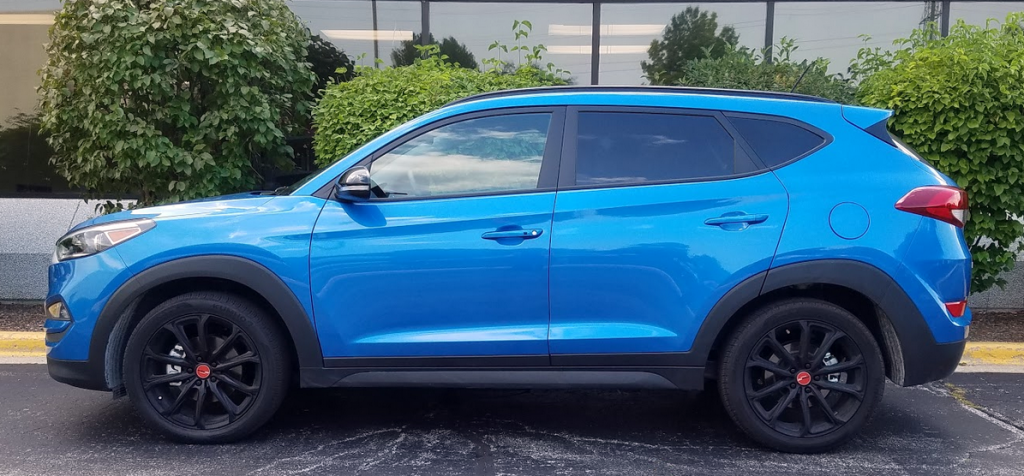

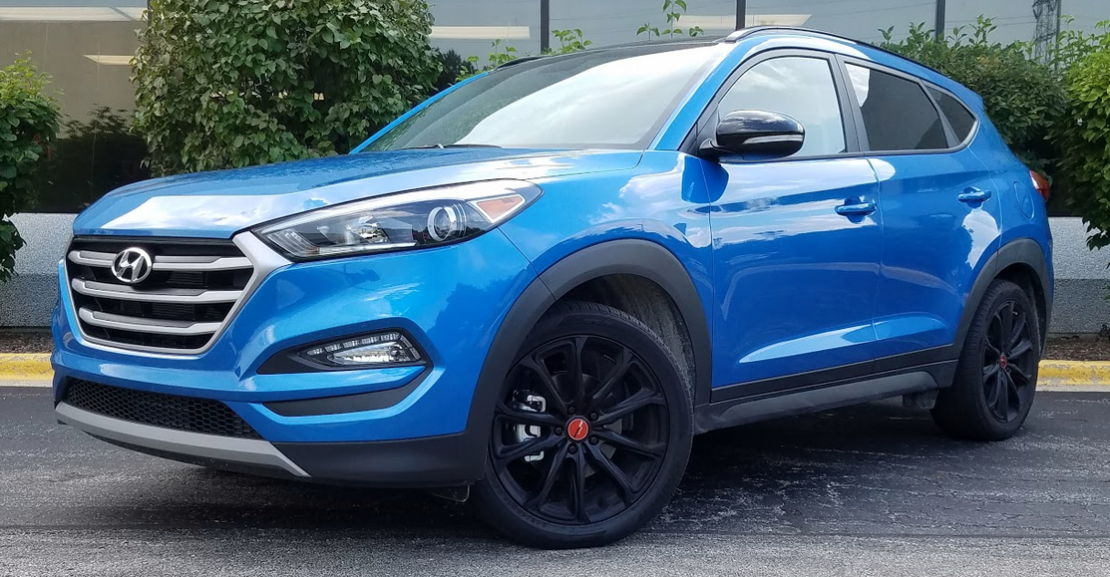
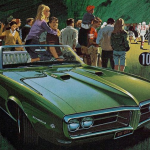
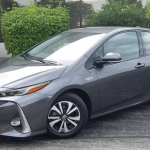
Your big and tall rating is a bit off. I am a 330 lb male and the driver’s side is a tight fit for me. My Knee is up against the door and the seat is not very padded. getting around town I’m good but traveling is painful. I wear a pair of hiking shorts and by the end of my 200-mile journey I got my knee looking like a waffle because it is pressed against the speaker on the door.